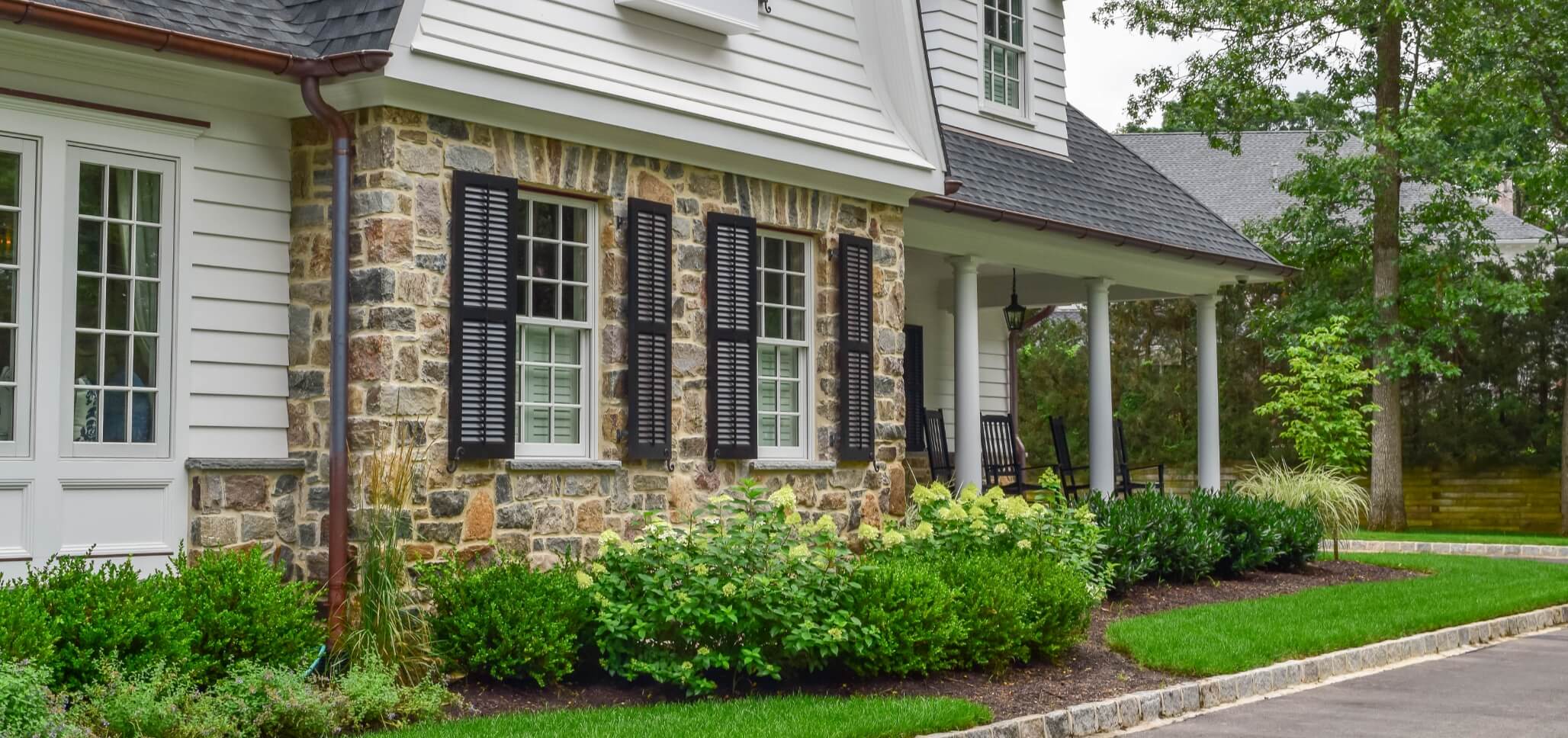 At first glance, it may appear that retaining walls are nothing more than simply stacked stones or blocks.
At first glance, it may appear that retaining walls are nothing more than simply stacked stones or blocks.
In reality, retaining walls are carefully built piece by piece as they constantly battle against the laws of gravity, working to prevent soil from sliding and eroding away from a foundation or landscape.
When used to create multiple levels or tiers in a sloped landscape, these attractive barriers can also hold flower gardens, places to sit and socialize, and increase yard space.
For these walls to be able to handle these tasks and be both functional and beautiful, the right retaining wall materials must be utilized.
The Importance of Retaining Wall Materials
The general principle behind a retaining wall is quite simple, but a quick look around your neighborhood will reveal plenty of unsightly or unsound walls that are bulging, cracked, or even leaning.
This is because many homeowners are unfamiliar with the different types of available retaining wall materials, and the considerations that go along with each. Certain materials have special drainage requirements, or cannot be constructed as high as others.
As a result, it’s extremely important that careful planning goes into the selection of the materials used before the wall is ever erected. The two most popular options are:
- Concrete Blocks – Concrete blocks are popular as retaining wall materials due to affordability and versatility. Since the units are man-made, they can be manufactured in a variety of different shapes, sizes, and colors. Another perk is that the blocks usually feature an interlocking lip at the base, enabling each to be easily fitted together and held in place.
- Natural Stone – Natural stone looks gorgeous when used to build retaining walls, and offer homeowners a lot of variety in terms of the types of available stone, shape, size, color, and texture. Special considerations must be made for drainage in these walls, though, and more labor is required to set the stones correctly. It’s important to also keep in mind that using natural stone for taller or larger retaining walls may drastically increase your budget.
Successfully Constructing Retaining Walls
Skill and precision are an absolute must throughout the construction of a retaining wall.. When you consider the fact that even a wall that’s just 4 feet high and 15 feet long could be holding as much as 20 tons of soil, it becomes clear that the structural integrity of the barrier is extremely important.
Unless each stone or block is carefully fitted together and unless proper drainage is allowed for, the wall could begin to deteriorate prematurely and compromise your entire landscape.
Because of this, the majority of homeowners choose to enlist the help of a professional to ensure that the wall is constructed properly. Unless you have experience building retaining walls in the past, we recommend working with a local contractor.
Retaining Wall Materials in NJ
Our team at Braen Supply is eager to help you to construct a structurally sound and highly attractive retaining wall for your property. Drop by to take a look at our huge inventory of retaining wall materials, including a variety of different types of natural stone and concrete blocks.
We’ve got the knowledge required to help you select a material that will meet your budgetary needs, fit your style, and look great within the scope of your landscape.
We’re also well-connected with a number of reliable landscapers and contractors and are more than happy to connect you with a professional that can get the job done right.

